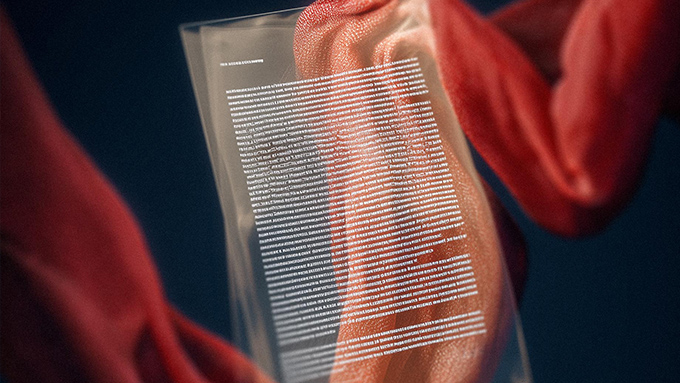Evaluation of the Decisions of the 11th Civil Chamber of the Court of Cassation on the Similarity of Trademarks in 2022
Introduction
The Court of Cassation has evaluated the criteria related to the similarity of the trademark in all of these decisions, and while showing how the criteria will be applied, it has also helped to determine the boundaries of the term “likelihood of confusion”. In this article, four different 2022 decisions of the 11th Civil Chamber of the Court of Cassation on the invalidation of a trademark will be analyzed. The opinions of the high court on the criteria of trademark similarity will also be discussed. The 11th Civil Chamber of the Court of Cassation’s decisions to be discussed in this article are as follows:
- Decision dated 15.02.2022 and numbered 2020/7024E. 2022/1138K ("1st Decision")
- Decision dated 14.02.2022 and numbered 2020/6991E. 2022/1093K. ("2nd Decision")
- Decision No. 2020/6754E. 2022/994K dated 10.02.2022 ("3rd Decision") and
- Decision No. 2020/6776E. 2022/858K dated 07.02.2022 ("4th Decision")
Regulation on Similarity of Trademarks
The application for a trademark which is identical or similar to a previously registered trademark, and which is likely to be confused with it, is accepted as a relative ground for refusal both in the abrogated Decree Law No. 556 dated 24.06.1995 on the Protection of Trademarks ("Trademark Law") and in the current legislation, Industrial Property Law No. 6769 ("IPL"). Both laws grant the right holder whose right is infringed the right to file a lawsuit for the invalidation of the trademark.
Article 6/1 of the IPL (Article 8/1 of the Trademark Law) provides that the likelihood of confusion, including the likelihood of association by the public, with a registered or previously applied-for trademark due to the sameness or similarity of the content (image, shape, color, phonetics etc.), or sameness or similarity of the goods or services covered by the trademark application, is a ground for refusal of the trademark application.
However, similarity with a previously registered trademark does not only give the prior right holder the opportunity to object to the trademark application that infringes his/her right at the time of registration. It also gives him/her the right to request the invalidation of this subsequent trademark (Article 25 of the IPL, Article 42 of the Trademark Law). The prior right holder is not required to have previously objected to the announcement made in the Trademark Bulletin in order to exercise this right of action.
According to Article 6 of the IPL, a trademark for which registration is requested must fulfil the following criteria in order to be considered similar to a previously registered (or applied- for) trade mark:
- Similarity to a previously registered or applied-for trademark.
- Similarity in the classes of goods and services covered by the allegedly similar trademarks.
- The possibility of confusion by the public, including the possibility of association.
As can be seen, in order to claim that a trade mark is similar to another, mere similarity is not deemed sufficient, as the same similarity is also required for the classes of goods and services to which the trade mark belongs. Accordingly, if the classes of goods and services to which two trademarks, which may be deemed similar in the formal sense, are registered are different from each other, it will not be possible to assert a relative refusal objection according to this article, or to claim the invalidity of the trademark based on this. Undoubtedly, the exceptional rights of a well-known trademark are reserved. The IPL does not consider the similarity between the form and registration classes to be sufficient, and requires that the similarity should cause confusion between the trademarks, including association. The measure of this confusion is governed by the expression "by the public".
The section on the similarity of trademarks in the IPL does not provide any examples, but only sets forth the conditions. The questions on the extent of similarity, what should be understood by the term "public", the limit of similarity of the classes of goods and services, or what should be understood by the term "confusion" in this regulation, have been explained and given meaning by the case law and academic commentary. The decisions of the Court of Cassation have been especially important in shedding light on how the legislation will be applied, and how the criteria introduced by the legislation should be understood for many years to come.
Evaluations on the Similarity of Trademarks in the Decisions of the 11th Civil Chamber of the Court of Cassation
In its 1st Decision, the Court of Cassation underlined that, as regulated under Article 6 of the IPL (Article 8 of the Trademark Law), in order to request the invalidation of the objected trademark, similarity is not sufficient, as it is also necessary to investigate whether there is a similarity between the trademark of the original right holder and the goods and services for which the applied trademark is registered. It reversed the decision of the court of first instance rendered without conducting such an investigation. In the 2nd Decision, the Court of Cassation did not consider only a formal similarity examination to be sufficient, but also considered that the similarities of the trademarks should be evaluated in terms of registration classes.
The Court of Cassation attaches such importance to the consideration of the registered classes of goods and services in the similarity examination that it may sometimes even give priority to this alongside of the claim of a well-known trademark. In the 4th Decision, while evaluating the similarity claim between the tobacco manufacturer "CAMEL" and "CML Cafe Bistro + smiling camel shape in Arab clothes," the Court of Cassation determined that there was a low similarity link between the trademarks that could be established by indirect inferences and concluded that there was no similarity that would cause confusion between the trademarks, since the classes of goods and services in which the trademarks are registered were very different from each other.
In these Court of Cassation decisions, although the Court itself does not make it a subject of review, it is apparent that the court of first instance decisions, which were rendered in accordance with prior precedent, include explanations regarding the concept of "public" used in the law. In these decisions, in parallel with the jurisprudence of the Court of Cassation that has stabilized over the years, the term "public" is defined as the "average consumer." In the 1st Decision, the level of perception and understanding that should be sought in this average consumer group is summarized by the court of first instance with the following principles:
- The average consumer does not consist of people with specialized knowledge or of especially careful people.
- The average consumer is reasonably well-informed, does not have the opportunity to see the trade mark and the applied-for mark at the same time and compare their details, and has a more or less clear memory of the trade mark that he or she has already seen and used.
- In order to be able to talk about misunderstanding and confusion, it is not necessary for the average consumer to think of the other brand immediately and without any thought when he/she sees a branded product and not to perceive that these brands are different.
In the 3rd Decision, the Court of Cassation, while evaluating the level of perception of the average consumer, stated that simple English expressions can be understood by a significant part of the society, and that they may know the meanings of the expressions "goldenvillage" and "greenvillage," but that the distinctive power of the term “village” is extremely weak in terms of the perception of purity and naturalness in food products. On the other hand, in the 2nd Decision, the Court held that the phonetic and visual similarity of the marks "OOPS!" and "vioops" is unarguable.
Conclusion
The legislation sets forth certain criteria regarding the similarity of a newly applied-for trademark to a registered trademark or a trademark that has been previously applied for, and requires that the application criteria must both be present due to similarity. These criteria have been concretized by the consistent case law of the Court of Cassation, and some principles have been set forth through cases regarding the segment of society that should be understood by the term "public" in the legislation.
All rights of this article are reserved. This article may not be used, reproduced, copied, published, distributed, or otherwise disseminated without quotation or Erdem & Erdem Law Firm's written consent. Any content created without citing the resource or Erdem & Erdem Law Firm’s written consent is regularly tracked, and legal action will be taken in case of violation.
Other Contents

The Law on Intellectual and Artistic Works No. 5846 (“LIAW”) conditions the recognition of an intellectual product as a “work” (eser) under the LIAW—and thus its protection—on two fundamental criteria: the intellectual product must fall within one of the categories of works explicitly enumerated in the LIAW and bear...

Although trademark protection grants the proprietor strong and exclusive rights, its continuation is contingent upon the trademark being genuinely and functionally used in commercial life. Article 9 of the Industrial Property Code No. 6769 (“IPC”) authorizes the cancellation of a registered trademark where…

In today's competitive business environment, the protection of trademarks plays a vital role in maintaining the competitive advantage of businesses and ensuring consumer trust. In this context, the protection of well-known trademarks is of particular importance in preserving the commercial value and reputation of...

It is observed that there are changes in the legislation and judicial decisions as to whether the use of a previously registered trademark or a trademark for which a registration application has been filed can be considered as trademark infringement by third parties by using the trademark as a trade name...


Today, the globalization of economic activities leads to the transfer of numerous personal data internationally during the daily operations of companies. Therefore, like many national and international data legislations, Law No. 6698 on the Protection of Personal Data (“PDPL” or “Law”) includes protective...

The relationship between the author and the product of their creative activity is protected by moral rights. The moral rights of the author set out in the Intellectual and Artistic Works Act numbered 5846 (“IAWA”) include the authority to disclose the work to the public, the authority to designate the name...

The right to property, which is one of the concepts and values underlying the liberal economic and legal system, regulates the ownership relationship between the person and goods. The scope of the term “goods,” which is the subject of the concept of property...
















